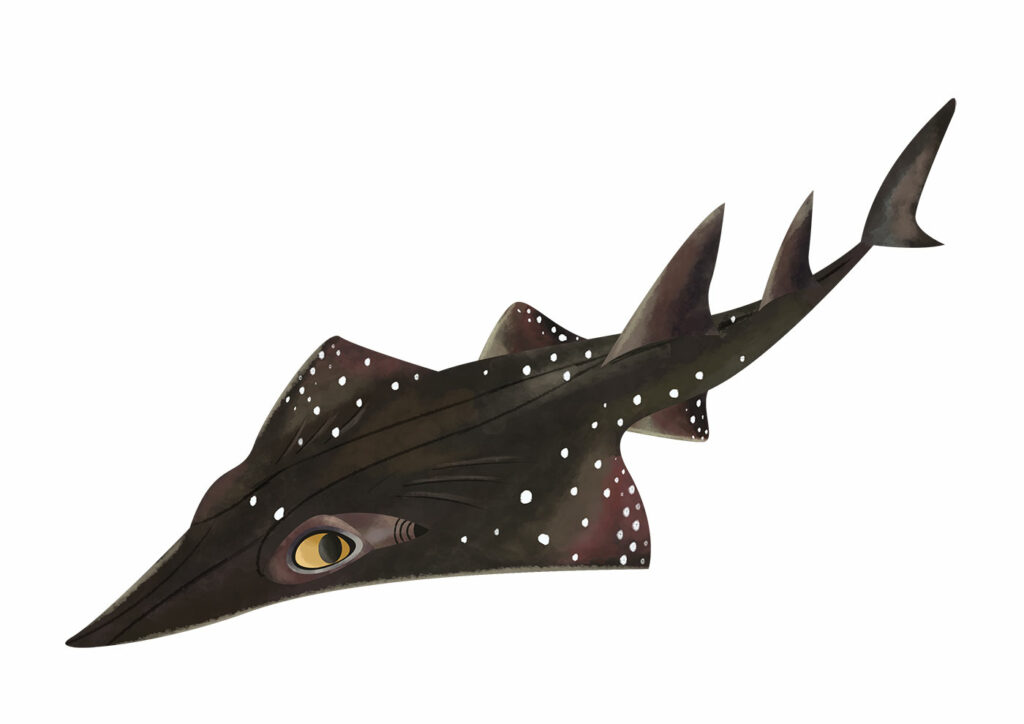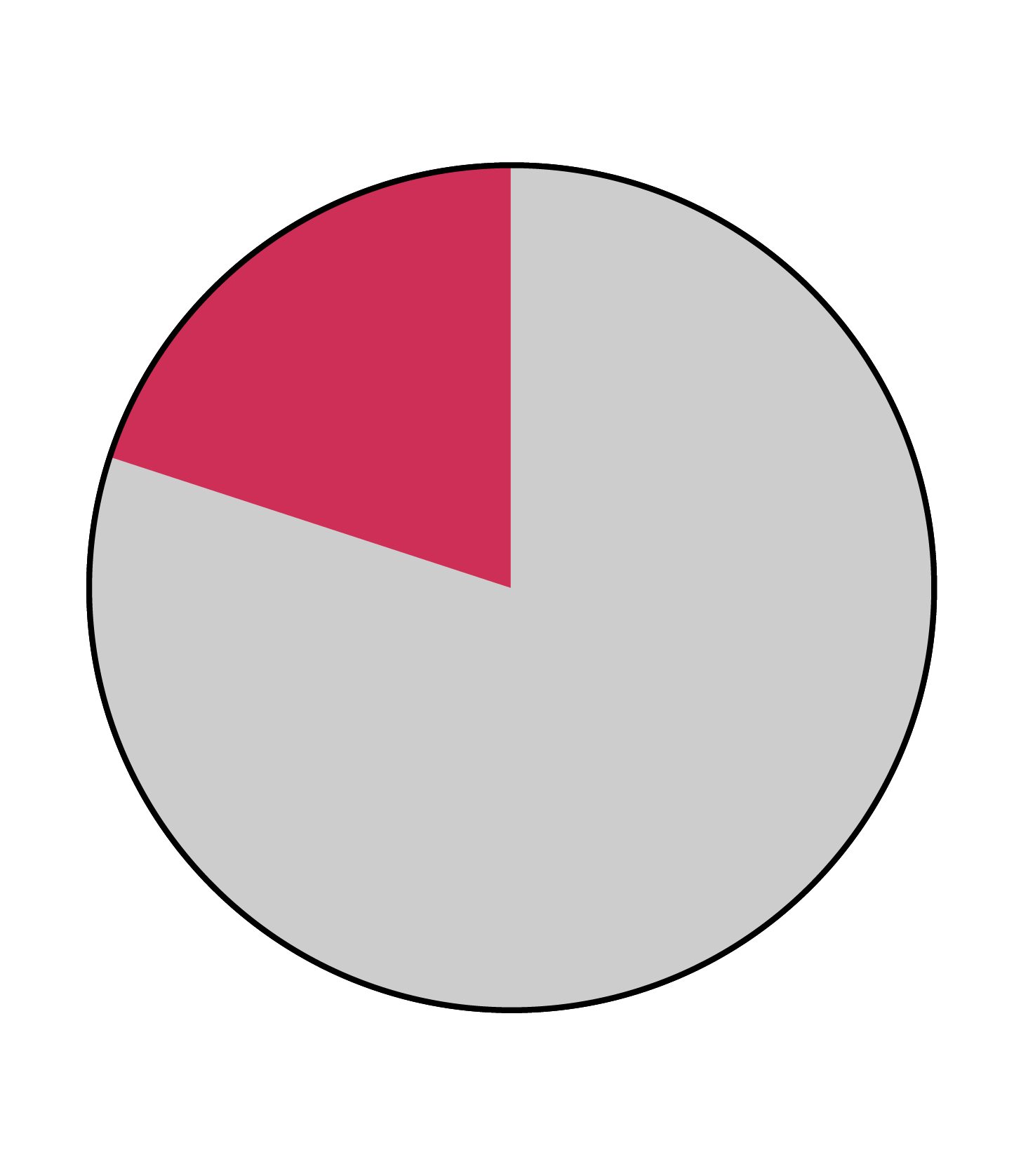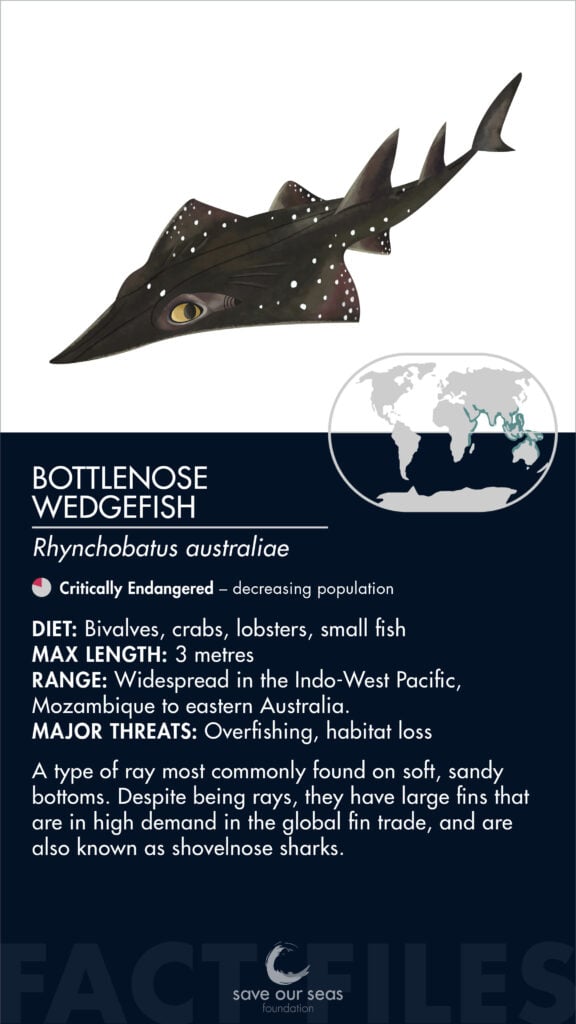Bottlenose wedgefish
Rhynchobatus australiae



Bottlenose wedgefish are actually a type of ray, and most commonly found on soft, sandy bottoms. Despite being rays, they have large fins that are in high demand in the global fin trade, and are also known as shovelnose sharks.

Identification
Wedgefish are notoriously difficult to identify, and the bottlenose wedgefish is often mistaken for the whitespotted wedgefish. It doesn’t help that both have white spots on their backs, with the bottlenose often mistakenly referred to as whitespotted! However, there are some key features to tell them apart – while both are grey, bottlenose wedgefish have distinctly fewer white spots, with their backs appearing almost uniformly dark grey as adults. Also, bottlenose wedgefish have three clear white spots over where the rear of the pectoral fins join the body. Meanwhile the whitespotted wedgefish has white spots all over, and prominent black bars between the eyes.
Special behaviour
Due to their elusive nature, information on bottlenose wedgefish behaviour is particularly sparse. They are typically seen resting on sandy bottoms, pumping water over their gills with their spiracles.
Reproduction
Bottlenose wedgefish are ovoviviparous, meaning eggs develop and hatch internally, with the embryos sustained by a yolk sac. Litters are relatively small (7–19 pups), and they have an estimated lifespan of 15 years. Pups are approximately 0.46–0.5 m in length at birth.
Habitat and geographical range
Bottlenose wedgefish have a broad distribution across the Indian Ocean and West Pacific, ranging from Mozambique through to Australia. However, as mentioned before they are easily mistaken for whitespotted wedgefish, and this may have complicated historical descriptions of their range. In terms of habitat, they primarily occupy inshore waters, generally on soft bottomed substrates like sand, and often near coral reefs.

Diet description
Bottlenose wedgefish feed on a variety of crustaceans (e.g. crabs and lobsters), molluscs and various bottom-dwelling fish.
Threats
Bottlenose wedgefish are mainly threatened by intense overfishing throughout their range (although there is limited exploitation in northern Australia). They are generally retained for their meat and fins, and are caught in a diverse range of fisheries, including gillnet, trawl, and seine, at both industrial and artisanal scales. Wedgefish are frequently targeted due to the high value of their large fins, and fisheries for them are generally unregulated. Habitat loss is also a significant threat for them, due to their preference for shallow, coastal habitats. Dredging and coastal reclamation, along with destruction of mangrove habitats, all decrease the available habitat for this species in the region. Due to lack of data, and historical confusion with the whitespotted wedgefish, it is particularly difficult to infer population declines for this species. However, based on available data it has been tentatively estimated that populations have declined by more than 80%, with their subsequent listing as Critically Endangered by the IUCN. Their international trade is also restricted by their listing of Appendix II on CITES.
Relationship with humans
The primary relationship with bottlenose wedgefish is as a food resource. Although a ray, they are generally described as a ‘shark-like’ ray due to their appearance and large dorsal and caudal fins. These fins are among the most valuable in the international shark fin trade. Due to their intense exploitation, they are now amongst the most endangered families of marine fish. There is also a growing appreciation of these fish among tourists, and there are certain locations (e.g. northern Australia) where divers will seek out encounters with them.
Fun Facts
Bottlenose wedgefish, along with other guitarfish and wedgefish, are the most endangered marine fish in the world, and collectively referred to as ‘Rhino Rays’.
They are very easily confused with the whitespotted wedgefish, but some key features tell them apart (see above).
References
Peter Last, et al, 2016, Rays of the World.
IUCN Red List of Threatened Species, Bottlenose wedgefish
CITES, Wedgefish
Min Yi Choo, et al., 2021, Diversity and origins of giant guitarfish and wedgefish products in Singapore


